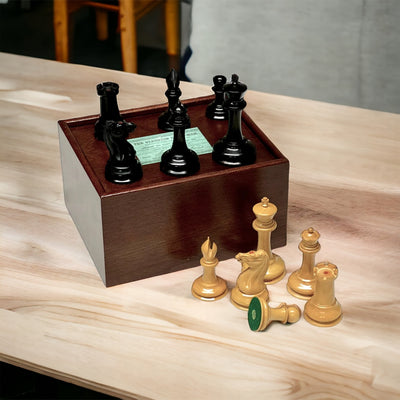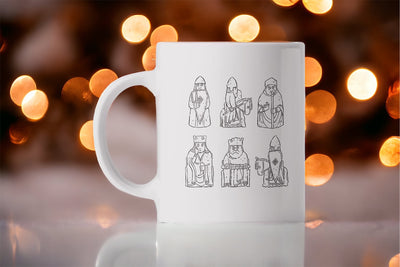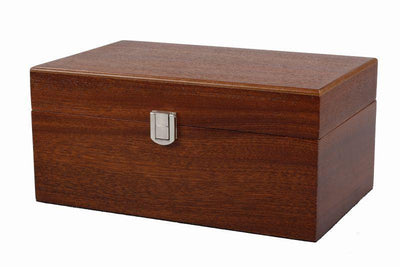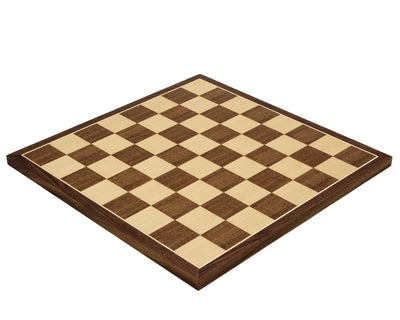Staunton Chess Sets
You're surely comfortable with the Staunton design of chessmen even in the event that you aren't an enthusiastic chess player. They're the very image which arrives to the heads of just what a chess piece resembles, of the majority of folks and they've become interchangeable with the game. They can be the standard by which all chessmen are made and they may be the layout stipulated for tournament play, formally designated as such from the World Chess Federation in 1924 in the tenets of chess.
Why is this unique layout the classic example of chessmen the planet over and where did the layout originate?
This is a brief history of the Home of Staunton and it is organization with all the 'Royal Game.'
The requirement for a Design Overhaul?
The game of chess has existed for centuries but actually did not become popular. There was no standard layout for chessmen. Players and their particular chessmen, created by the big designers and makers of the day like French Regence Lund, Merrifield, Calvert, Saint George, and Selenus played.
The primary issue with one of these chessmen was in their layout; the sets were impractical, the chessmen were too similar in look and they were expensive to producer. The pieces were occasionally overly elaborate for practical use, occasionally too flimsy, and at times just plain perplexing when seen on a chessboard.
This really is the part in chess history where the sport is joined by our principal figures.
The players:
Nathaniel Cook: Entrepreneur, newspaper editor, and also the registrar and formally-named designer of the 'Staunton design' chessmen.
Howard Staunton: Shakespearean scholar and unofficial World Chess Champ and ability of the times.
There exists no dispute that it had been supported and named, and that there was an overhaul of the layout of chessmen, that it was formally accredited to and enrolled by Nathanial Cook for Howard Staunton. There's, nevertheless, the impetus with this redesign came from continued criticisms from his customers on the impracticalities of present layouts, and some conjecture the layout was initially conceived by John Jaques himself.
Whichever way it occurred, the outcome is the same: The Staunton layout chessmen are outstanding in look, stability, and functionality to any present chessmen of the time and keep to function as standard bearer to today.
The 'Staunton Design' set was freely available 1849 , on 29 September.
The Layout Difference
Irrespective of height and the uncertainty of present chess sets, the similarities in the looks of chessmen of a set, combined with the reality that competitors and their very own unique set frequently played, that caused a significant issue. The inability of a player to recognize Queen, Bishop, or a King within an adversary's set of chessmen could cost them the match.
There are several crucial elements in the Staunton Layout that make the difference:
- Certainly defined pieces. As an example, the King is instantly identifiable by the Queen along with his crown . The pieces are various heights to allow them to be looked at and differentiated by the opposing players from one another.
The layout continues to be elegant in its simplicity, but using a hand that is better -feel.
- The chessmen were shortened general, given a broader, more secure foundation, and weighted for stability that was greater. The undersides of the pieces were covered in felt to relieve friction.
The comparative simplicity of layout also caused it to be more easy to mass produce, and for that reason less expensive.
Why is this unique layout the classic example of chessmen the planet over and where did the layout originate?
This is a brief history of the Home of Staunton and it is organization with all the 'Royal Game.'
The requirement for a Design Overhaul?
The game of chess has existed for centuries but actually did not become popular. There was no standard layout for chessmen. Players and their particular chessmen, created by the big designers and makers of the day like French Regence Lund, Merrifield, Calvert, Saint George, and Selenus played.
The primary issue with one of these chessmen was in their layout; the sets were impractical, the chessmen were too similar in look and they were expensive to producer. The pieces were occasionally overly elaborate for practical use, occasionally too flimsy, and at times just plain perplexing when seen on a chessboard.
This really is the part in chess history where the sport is joined by our principal figures.
The players:
Nathaniel Cook: Entrepreneur, newspaper editor, and also the registrar and formally-named designer of the 'Staunton design' chessmen.
Howard Staunton: Shakespearean scholar and unofficial World Chess Champ and ability of the times.
There exists no dispute that it had been supported and named, and that there was an overhaul of the layout of chessmen, that it was formally accredited to and enrolled by Nathanial Cook for Howard Staunton. There's, nevertheless, the impetus with this redesign came from continued criticisms from his customers on the impracticalities of present layouts, and some conjecture the layout was initially conceived by John Jaques himself.
Whichever way it occurred, the outcome is the same: The Staunton layout chessmen are outstanding in look, stability, and functionality to any present chessmen of the time and keep to function as standard bearer to today.
The 'Staunton Design' set was freely available 1849 , on 29 September.
The Layout Difference
Irrespective of height and the uncertainty of present chess sets, the similarities in the looks of chessmen of a set, combined with the reality that competitors and their very own unique set frequently played, that caused a significant issue. The inability of a player to recognize Queen, Bishop, or a King within an adversary's set of chessmen could cost them the match.
There are several crucial elements in the Staunton Layout that make the difference:
- Certainly defined pieces. As an example, the King is instantly identifiable by the Queen along with his crown . The pieces are various heights to allow them to be looked at and differentiated by the opposing players from one another.
The layout continues to be elegant in its simplicity, but using a hand that is better -feel.
- The chessmen were shortened general, given a broader, more secure foundation, and weighted for stability that was greater. The undersides of the pieces were covered in felt to relieve friction.
The comparative simplicity of layout also caused it to be more easy to mass produce, and for that reason less expensive.








